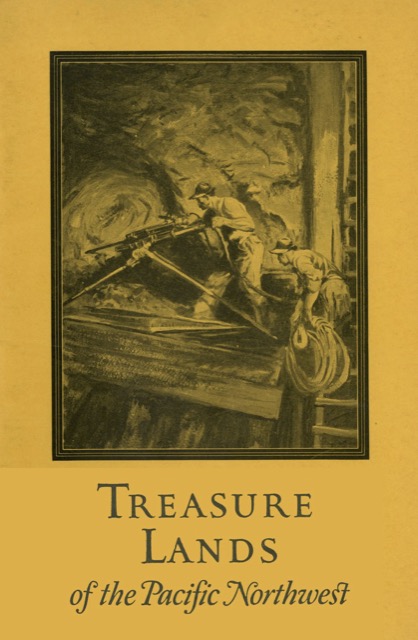This, the ninth in the same series of booklets described in yesterday’s post, discusses the mineral wealth of the Pacific Northwest. Nowadays, “Pacific Northwest” is used to refer to Oregon and Washington; but the railways that published this booklet expanded it to include Idaho, Montana, and Wyoming. That’s lucky in this case, as most of the Northwest’s minerals at that time were found in Montana and northern Idaho.
 Click image to download an 11.4-MB PDF of this 36-page booklet.
Click image to download an 11.4-MB PDF of this 36-page booklet.
Since then, Wyoming has starred as a leading coal producer. But mines were and are far less important in Oregon and Washington. To make up for that, perhaps, the booklet also includes information on Alaska minerals.
I scanned this book at the Spokane Public Library. Scanning at a distant location always carries the danger that I’ll skip a page. Apparently, I did in this case as pages 30 and 31 were missing. In yesterday’s booklet, these pages had some generic information about the Northwest, and it seems likely that today’s used the same information. So I’ve included the pages from yesterday’s with this one; if I find another copy of this booklet, I’ll scan those pages and post a corrected copy.

It’s interesting to see the booklet taked of converting natural gas to gasoline as if it was inevitable. Infact, that has still not happened on a large scale due to cost and technological problems. Scientists have been working on this for almost 100 years and still hasn’t found a way to make it practical. Coal was a large part of the mineral wealth of the region in 1924 but, in 2016, coal has become much less valuable while natural gas has become much more valuable. Copper is about the only thing that has maintained its relative value but easily extracted copper is beginning to run out, with only one producing mine left in Butte. Most of our copper now comes from Arizona and Utah. Things change in 90 or so years, and booklets like this really highlight the changes. Thanks for posting them.
Jim